- Learning time
- 30 minutes
- First play time
- 60 minutes
Unforgiven
Designed by: Tom Butler
In Unforgiven, two players face off as the defence and prosecution teams in the trial of Mary Surratt. UK readers may not be aware: the assassination of Abraham Lincoln by John Wilkes Booth in 1865 was part of a confederate plot that involved the attempted killing of others. Somewhere in the background of the nefarious plot was Surratt; confederate sympathiser and owner of the guest house where Booth and other plotters stayed. It seemed she knew something; but how much? Enough to hang her, as far as the United States government was concerned. That was the real Surratt’s fate.
As the prosecution side, you’re arguing for a similar conviction. As the defence, you want to sow enough reasonable doubt to acquit. But Unforgiven is not so much a tug of war over the hearts and minds of the Jurors in the military tribunal, but several tugs of war – emotion and logic, yes. But also national interest, and various types of evidence. These are the currencies of Unforgiven, and gathering them is important if you’re going to swing the jurors your way. There are three ways to win – persuading four jurors to your side, moving the justice marker to the innocent/guilty spots, or should neither of these occur after the trial’s three phases, whoever has accrued the most trial points will win.
Both sides begin with two sympathetic (but not yet convinced) jurors. Five more sit undecided on the board itself. Then trial cards are laid out in a pattern (see pics above) that players will select from one at a time; each card taken making any cards below it potentially available. The three phases of the trial are the taking-of-cards – when all cards are gone, a new phase begins.
What are you doing with these cards? Well, there are four things you can do. You can purchase it, paying the price at the bottom of the card to add it to your tableau in front of you, which represents your legal argument. Cards in your argument have a power at the top – they may offer resources of the trials various aforementioned currencies, or some ongoing benefit or one-off powerful move. Ideally, as the game progresses, your argument gets stronger and stronger.
But you can discard the card instead, to do one of three things. Discard it for sway, which can be used to pay for cards or select dice (more on dice momentarily), discard to persuade one of the three undecided jurors towards your side (paying the resources needed to do so) or convince a juror already in your argument: this is a powerful move because not only does a convinced juror give you rewards for doing so, four convinced jurors win you the game.
We mentioned dice – your turn always involves selecting a card, but you can also take dice from the track. These represent more of the currencies of evidence, logic, trail points and so on. The die closest to you is free to take, but if you want one further towards your opponent’s side, it costs you some of your precious sway to take it. Unlike resources on cards, which are considered permanent, using a die to pay for anything means it is lost.
Thus the game continues, with both sides trying to convince the jurors of their case, or pull the justice marker their way, or prevent both of these things happening whilst amassing trial points for the long-game win.
The guru's verdict
-
Take That!
Take That!
There are some cards that directly target opponents, true, but the predominant sense of interaction is the nabbing of specific cards.
-
Fidget Factor!
Fidget Factor!
Low to moderate, depending on the game state really: some turns whizz by. Others need more consideration.
-
Brain Burn!
Brain Burn!
Unforgiven is nowhere near as bonkers as the first sighting of icons in the rulebook suggests. There's a bit of rules-referencing when checking what certain cards do, but the brain-burning is more about the overlapping tactical push and shove of the three ways the game can end.
-
Again Again!
Again Again!
The outcome is not just down to the randomness of the card phases, which vary in set-up from game to game. Unforgiven's central axis is those three ways the trial can end; and predicting how each game will go is impossible.


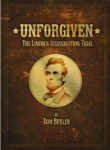
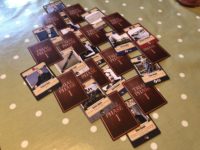
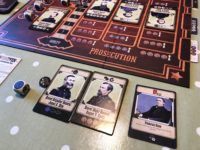
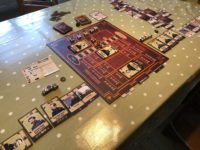




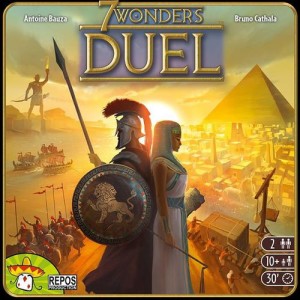
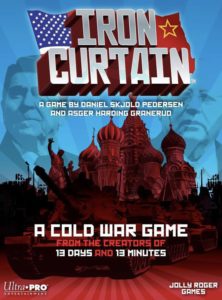
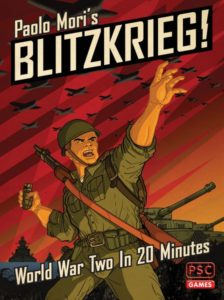
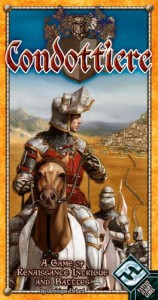
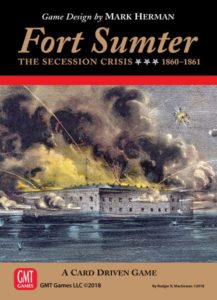
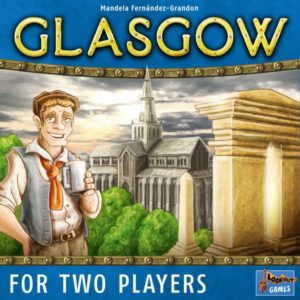
Sam says
A lot of two-player games have this tug-of-war feel to them, with players fighting for control, or majority, or a shared objective. Unforgiven has deviously devised things so pushing for one of them can critically waylay the others, and this three-way battle for victory imbues every decision you make - particularly in the latter stages of the game - with possible weighty consequences. Pushing for a justice victory, for instance, can be risky, as you give free reign to your opponent in swaying the jury. But focusing your all on the jury is expensive: you need to build a powerful argument to sway the four jurors you need. Plotting for the full-length trial victory might be safest - but you mustn't hand your opponents the freedom to do whatever they want with the cards you're neglecting. Thematically-speaking the Mary Surratt angle may disappear as you play (- it could be any trial) but mechanically designer Tom Butler has come up with something of a treat.